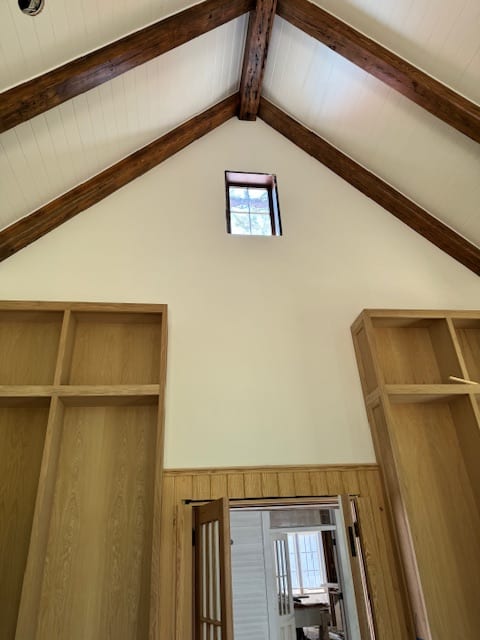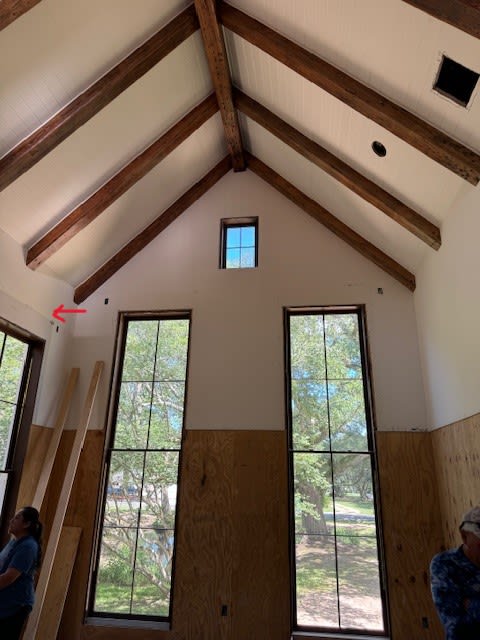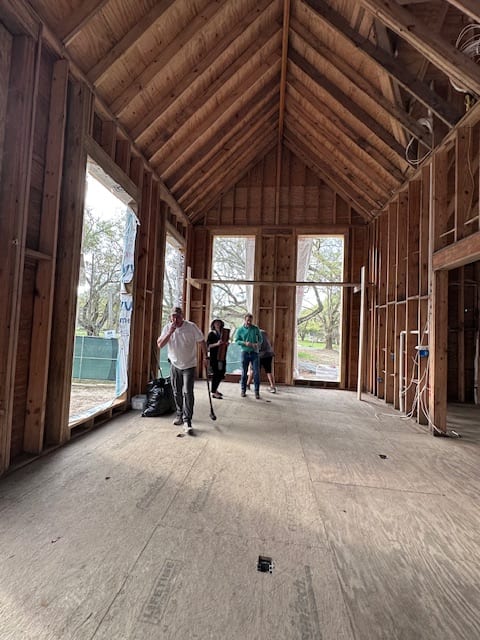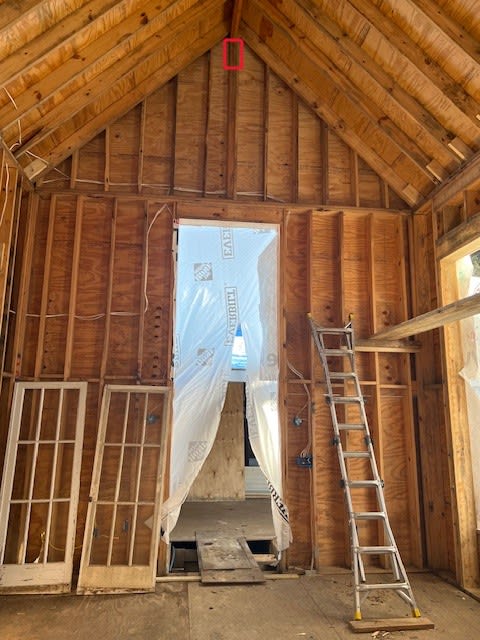Contractor friend was hired to finish the construction of partially completed home, after the original Contractor walked off the job. Following a permit inspection, one of the workers had some concerns about some shifting-out of the top of an art studio exterior wall following a wind event.
The room is gable framing, and the ridge beam is two 2x10" LVL beams. The ridge beam span is 25'. The pictures attached show the room shortly after framing, and in its existing condition.
I believe, after it was framed, they cut the ridge beam supports and added this 6"x10" cypress beam and these "decorative" 6x6 cypress rafters that are simply bolted into the wall top plate and into the ridge beam.
My belief is that the original ridge beam (two 2x10s) is undersized, and the room isn't adequately braced laterally. After running the numbers, I think the ridge beam should have been 3-ply 2x16. They were wondering if they could post-install the new ridge beam under the 2x10 ridge beam and then "wrap" it with cypress to make it appear like a beam. My issue with that is I'm not sure how the rafters will tie into the new ridge beam or how it would be braced laterally.
My initial 3 options were:
1. Remove 2x10's, replace with 2x16's (Most intrusive solutions because it would take a significant rebuild)
2. Add collar ties for lateral support.
3. Exposed Cables from wall top plate to wall top plate.
Anybody have thoughts here?




The room is gable framing, and the ridge beam is two 2x10" LVL beams. The ridge beam span is 25'. The pictures attached show the room shortly after framing, and in its existing condition.
I believe, after it was framed, they cut the ridge beam supports and added this 6"x10" cypress beam and these "decorative" 6x6 cypress rafters that are simply bolted into the wall top plate and into the ridge beam.
My belief is that the original ridge beam (two 2x10s) is undersized, and the room isn't adequately braced laterally. After running the numbers, I think the ridge beam should have been 3-ply 2x16. They were wondering if they could post-install the new ridge beam under the 2x10 ridge beam and then "wrap" it with cypress to make it appear like a beam. My issue with that is I'm not sure how the rafters will tie into the new ridge beam or how it would be braced laterally.
My initial 3 options were:
1. Remove 2x10's, replace with 2x16's (Most intrusive solutions because it would take a significant rebuild)
2. Add collar ties for lateral support.
3. Exposed Cables from wall top plate to wall top plate.
Anybody have thoughts here?





![[wink] [wink] [wink]](/data/assets/smilies/wink.gif) ) of just framing a new wall in front. That's pretty easy.
) of just framing a new wall in front. That's pretty easy.